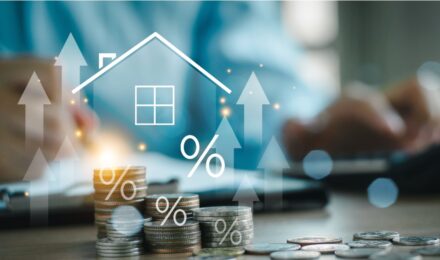There is a high probability that most people have heard about compounding, whether at home, school or work. That’s because it is a common economic term not only taught in schools but also used in the financial world. But what is compounding and what does it entail? Read on to learn more about compounding.
What is Compounding?
Compounding refers to the process in which the earnings of an asset are reinvested to create more earnings over a specific time, leading to the growth of profits. The growth occurs because the investment generates earnings from the initially invested principal and the accumulated interest over a compounding period. Depending on the financial institution in which a person invests their principal, the compounding period may be a day, week, month, or year.
Compounding is also known as compound interest and is based on the time value of money (TVM) concept. TVM is a financial model which stipulates that a given amount of money has a greater value today than the same amount of money in the future. Moreover, the model holds that money can only be grown through investment, implying that a delayed investment is an opportunity cost. The money increases in value if invested, but its value will diminish over time if it is not invested.
Real Life Compounding Demonstration
To demonstrate how compounding works, suppose a business person invests a principal of $5,000 in an account that offers 10% interest per annum, and the investor plans to withdraw his principal plus the accrued earnings after five years. After the first compounding period (1 year), the investor will have a total amount of $5,500, which is the initial principal ($5,000) plus the accumulated interest.
In the following compounding period, the investor will have a principal of $5,500. At the end of the second compounding period, the business person will have a total of $6,050, which is $5,500 (principal) plus $550 (interest). At the end of the five years, assuming the investor didn’t make any withdrawals and the interest rates remained the same, the amount in the account will be $8052.55. As seen, the compounded money increased over time, which couldn’t have been the case if it wasn’t invested.
Areas Where Compounding is Applicable
Compounding works on assets and liabilities alike. For assets, it applies to investments like savings, fixed deposits, retirement funds and recurring deposits. Concerning liabilities, it applies to loans, credit cards, and mortgages. People benefit when compounding is done on deposits and investments. On the contrary, individuals make losses when compounding is applied to debts and loans. In simple terms, compounding increases the value of an asset in the same way it also increases a liability.
Types of Compounding
Compounding is broadly categorized into two classes: periodic compounding and continuous compounding.
Periodic compounding, also called discrete compounding, is a method in which the interest earned on principle is calculated and added to the principal at regular intervals. In discrete compounding, the interest may be compounded weekly, monthly or yearly. It is the most common type of compounding used globally because it is practical in real life.
On the other hand, continuous compounding is where the accrued interest is added to the principle continuously over an infinite number of periods. Theoretically, continuous compounding suggests that the initial principle constantly earns interest and the accrued interests also receive constant earnings. Nevertheless, this type of compounding is only available in finance and is not practical in real life.
Factors Affecting Compounding
Various factors affecting compounding include:
• Principal Amount: The amount invested in a compounding account has a direct effect on the earnings. A higher principal amount grows faster than a lower amount. This also means that increasing the principal amount via deposits ensures growth. Reducing the principal amount via withdrawals reduces earnings.
• Period: The longer a principal amount is left to compound, the more interest it will earn. It is good for investment because letting money accumulate for a longer time will generate more earning. However, it disadvantageous for debts and loans.
• Frequency: The more compounding periods, the more income is accrued from a principal amount. For instance, an investor who puts their money in an account that has one compounding period in a year will get fewer earnings compared to an investor who invested the same amount in an account that has four compounding periods in a year. With regard to borrowing, it is better to take money from a financial institution with an annual compounding period than a monthly or quarterly compounding period. Less compounding periods mean less interest.
• Interest Rate: The rate at which the principal amount and subsequent interests compound has a direct effect on the final value. A higher interest will create more earnings and promote faster growth. Higher interest rates are suitable when investing, while lower rates are ideal for borrowing money or using credit cards.
Advantages of Compounding
Compounding is beneficial to consumers and financial institutions in various ways. Thanks to its interest in interest nature, compounding has a snowball effect that enables money to continue growing as time passes. Another advantage of compounding is it enhances growth. Increased earnings enable individuals or businesses to reinvest their money in their compounding accounting, allowing them to receive more interest.
Disadvantages of Compounding
Besides being beneficial, compounding has its fair share of disadvantages. One of the demerits of compounding is increasing interest on loans. Financial institutions apply compound interest to their loans, forcing consumers to pay more than they borrowed. It can be costly to consumers who miss or late a payment.
Bottom Line
Compounding is a fundamental financial concept that people can use to increase assets, like savings and retirement benefits. Compounding allows money to grow over time. However, compounding can also be disadvantageous. High-interest loans can grow over time and become difficult to pay. Overall, people should use compounding to their advantage by saving money in compound accounts over an extended period and aggressively paying high-interest loans to prevent them from adding up.
There is a high probability that most people have heard about compounding, whether at home, school or work. That’s because it is a common economic term not only taught in schools but also used in the financial world. But what is compounding and what does it entail? Read on to learn more about compounding.
What is Compounding?
Compounding refers to the process in which the earnings of an asset are reinvested to create more earnings over a specific time, leading to the growth of profits. The growth occurs because the investment generates earnings from the initially invested principal and the accumulated interest over a compounding period. Depending on the financial institution in which a person invests their principal, the compounding period may be a day, week, month, or year.
Compounding is also known as compound interest and is based on the time value of money (TVM) concept. TVM is a financial model which stipulates that a given amount of money has a greater value today than the same amount of money in the future. Moreover, the model holds that money can only be grown through investment, implying that a delayed investment is an opportunity cost. The money increases in value if invested, but its value will diminish over time if it is not invested.
Real Life Compounding Demonstration
To demonstrate how compounding works, suppose a business person invests a principal of $5,000 in an account that offers 10% interest per annum, and the investor plans to withdraw his principal plus the accrued earnings after five years. After the first compounding period (1 year), the investor will have a total amount of $5,500, which is the initial principal ($5,000) plus the accumulated interest.
In the following compounding period, the investor will have a principal of $5,500. At the end of the second compounding period, the business person will have a total of $6,050, which is $5,500 (principal) plus $550 (interest). At the end of the five years, assuming the investor didn’t make any withdrawals and the interest rates remained the same, the amount in the account will be $8052.55. As seen, the compounded money increased over time, which couldn’t have been the case if it wasn’t invested.
Areas Where Compounding is Applicable
Compounding works on assets and liabilities alike. For assets, it applies to investments like savings, fixed deposits, retirement funds and recurring deposits. Concerning liabilities, it applies to loans, credit cards, and mortgages. People benefit when compounding is done on deposits and investments. On the contrary, individuals make losses when compounding is applied to debts and loans. In simple terms, compounding increases the value of an asset in the same way it also increases a liability.
Types of Compounding
Compounding is broadly categorized into two classes: periodic compounding and continuous compounding.
Periodic compounding, also called discrete compounding, is a method in which the interest earned on principle is calculated and added to the principal at regular intervals. In discrete compounding, the interest may be compounded weekly, monthly or yearly. It is the most common type of compounding used globally because it is practical in real life.
On the other hand, continuous compounding is where the accrued interest is added to the principle continuously over an infinite number of periods. Theoretically, continuous compounding suggests that the initial principle constantly earns interest and the accrued interests also receive constant earnings. Nevertheless, this type of compounding is only available in finance and is not practical in real life.
Factors Affecting Compounding
Various factors affecting compounding include:
• Principal Amount: The amount invested in a compounding account has a direct effect on the earnings. A higher principal amount grows faster than a lower amount. This also means that increasing the principal amount via deposits ensures growth. Reducing the principal amount via withdrawals reduces earnings.
• Period: The longer a principal amount is left to compound, the more interest it will earn. It is good for investment because letting money accumulate for a longer time will generate more earning. However, it disadvantageous for debts and loans.
• Frequency: The more compounding periods, the more income is accrued from a principal amount. For instance, an investor who puts their money in an account that has one compounding period in a year will get fewer earnings compared to an investor who invested the same amount in an account that has four compounding periods in a year. With regard to borrowing, it is better to take money from a financial institution with an annual compounding period than a monthly or quarterly compounding period. Less compounding periods mean less interest.
• Interest Rate: The rate at which the principal amount and subsequent interests compound has a direct effect on the final value. A higher interest will create more earnings and promote faster growth. Higher interest rates are suitable when investing, while lower rates are ideal for borrowing money or using credit cards.
Advantages of Compounding
Compounding is beneficial to consumers and financial institutions in various ways. Thanks to its interest in interest nature, compounding has a snowball effect that enables money to continue growing as time passes. Another advantage of compounding is it enhances growth. Increased earnings enable individuals or businesses to reinvest their money in their compounding accounting, allowing them to receive more interest.
Disadvantages of Compounding
Besides being beneficial, compounding has its fair share of disadvantages. One of the demerits of compounding is increasing interest on loans. Financial institutions apply compound interest to their loans, forcing consumers to pay more than they borrowed. It can be costly to consumers who miss or late a payment.
Bottom Line
Compounding is a fundamental financial concept that people can use to increase assets, like savings and retirement benefits. Compounding allows money to grow over time. However, compounding can also be disadvantageous. High-interest loans can grow over time and become difficult to pay. Overall, people should use compounding to their advantage by saving money in compound accounts over an extended period and aggressively paying high-interest loans to prevent them from adding up.



